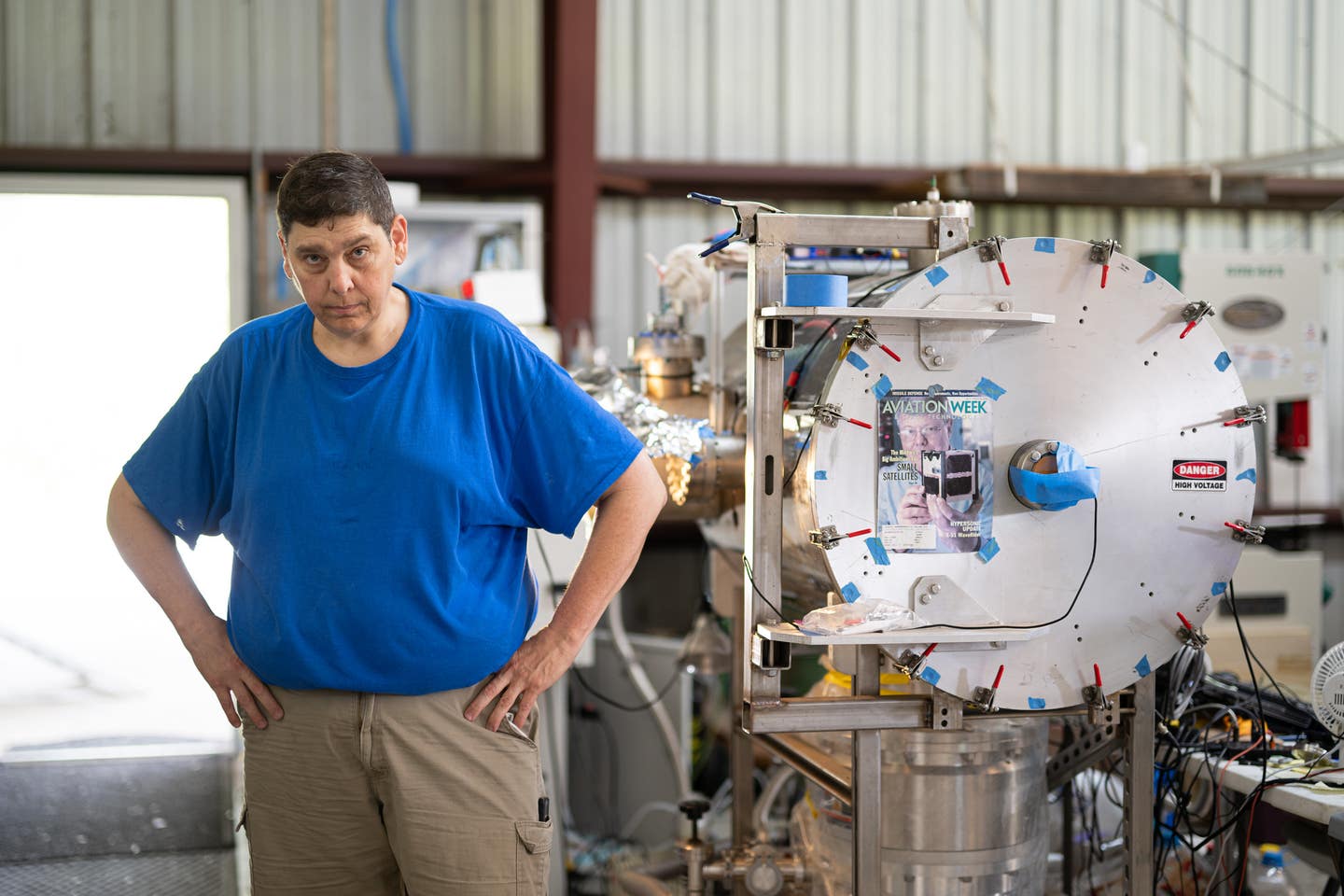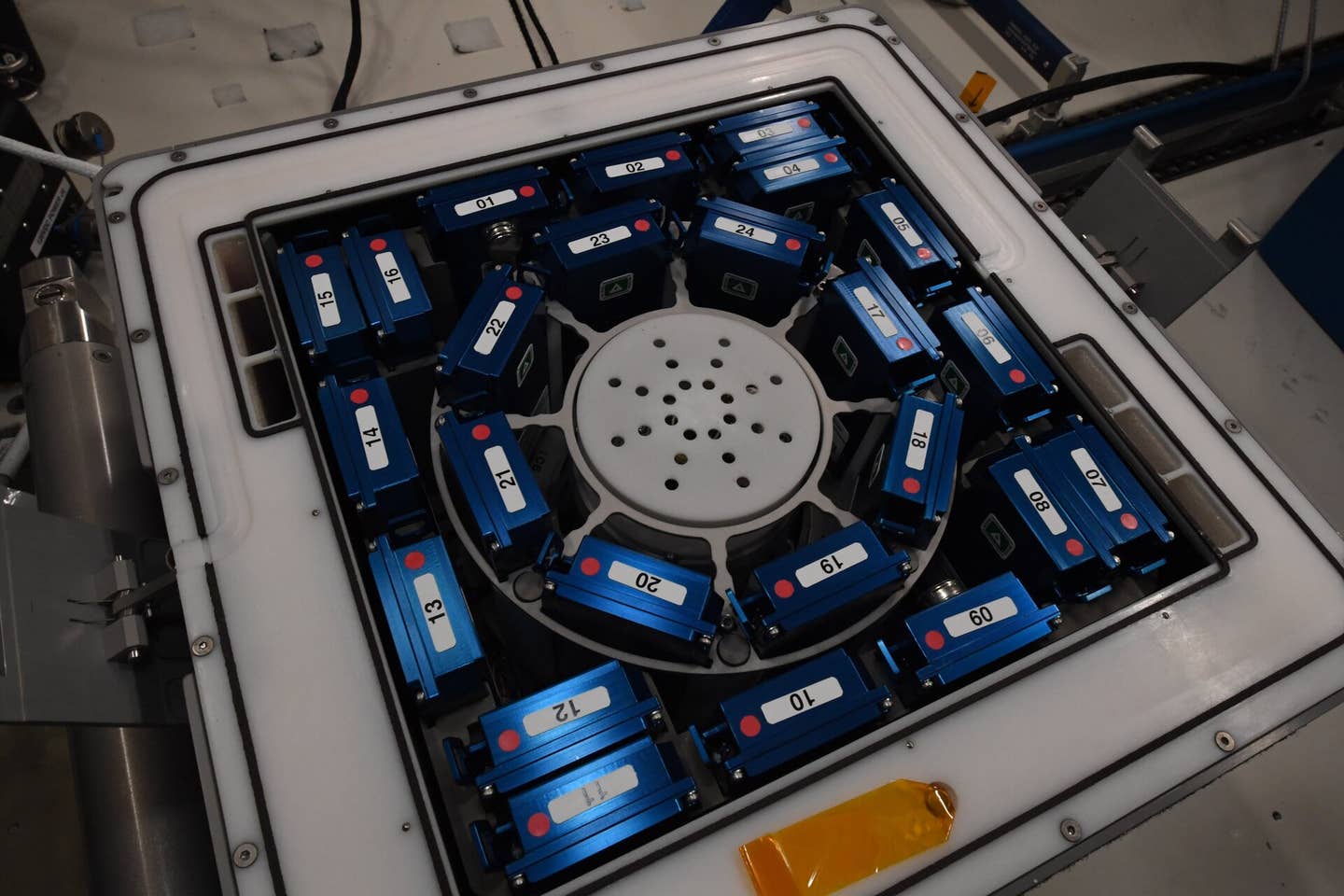NASA veteran unveils propellant-free space drive that could redefine exploration
Dr. Charles Buhler’s propellantless propulsion drive has successfully countered Earth’s gravity, challenging long-standing principles of physics.

Exodus Propulsion Technologies has built a propulsion drive that doesn’t need fuel and can counter Earth’s gravity. (CREDIT: Exodus Technologies)
When you think of rockets, you picture blazing exhaust, roaring engines, and fuel tanks as tall as buildings. That’s because for centuries, propulsion has meant one thing: push something out the back to move forward. Now, a NASA veteran and his small startup believe they’ve broken that mold. Their claim? They’ve built a propulsion system that doesn’t need fuel and can push against Earth’s gravity itself.
The scientist behind the announcement is Dr. Charles Buhler, a seasoned engineer who spent decades working on the Space Shuttle, the Hubble Telescope, and the International Space Station. Today he co-leads Exodus Propulsion Technologies, and he says their “propellantless propulsion drive” might mark the beginning of a new era.
“The most important message to convey to the public is that a major discovery occurred,” Buhler said. He believes their work could shape how humans explore space for the next thousand years.
A Radical Shift in Propulsion
Instead of shooting out mass like traditional rockets, Exodus’ device relies on electric fields. The system creates thrust by manipulating electrostatic forces, which are the same invisible pushes and pulls you experience when static electricity makes your hair stand on end. The team calls this new method a “New Force,” suggesting that electric fields alone can generate sustained motion without expelling propellant.
This isn’t just a small tweak in engineering—it’s a fundamental shift. If proven, such a system would cut the enormous costs of spaceflight, open the door to longer missions, and make deep space exploration more practical than ever before. Imagine spacecraft that don’t need refueling depots or massive launch vehicles to leave Earth’s orbit. That’s what Buhler’s team hopes to make possible.
Related Stories
- New fusion-powered rocket could get us to Mars in half the time
- Giant catapult sends satellites into space without rocket fuel
From Small Sparks to Full Gravity
The road to this discovery wasn’t quick. Buhler and his colleagues began exploring propellant-free propulsion more than twenty years ago. They focused on asymmetry in electrostatic pressure, a subtle effect that could, in theory, create movement. Between 2016 and 2020, their best prototypes could only generate a tiny push—about one hundred-thousandth of Earth’s gravity. For most engineers, that would have been the end of the line.
But the Exodus team wasn’t satisfied. Their goal was “unity,” a term they use for the moment when the drive could generate enough force to fully counter Earth’s gravity. In 2023, they say they achieved it.
According to Buhler, the device finally produced thrust equal to one full Earth gravity inside their vacuum chamber tests, which simulate the conditions of outer space. “This discovery of a New Force is fundamental in that electric fields alone can generate a sustainable force onto an object and allow center-of-mass translation of said object without expelling mass,” he said.
He added that while the laws of physics like conservation of energy still apply, they’ve found a way to produce forces “unlike anything humankind has done before.”
Experiments Under Scrutiny
Of course, extraordinary claims bring extraordinary scrutiny. The history of alternative propulsion is filled with big promises that never held up. Take the EmDrive or IVO LTD’s so-called Quantum Drive. Both claimed to operate without fuel and sparked excitement years ago. Neither has yet proven effective outside the lab.
Skeptics are quick to point out that until Exodus demonstrates its drive in actual space, their announcement will remain unverified. Yet Buhler’s long career at NASA gives him credibility many of his predecessors lacked. He was NASA’s subject matter expert on electrostatics, the very field on which this device relies. His reputation, combined with the team’s detailed testing methods, makes people pay closer attention this time.
At the Alternative Propulsion Energy Conference (APEC), where Buhler first presented these findings, he explained how his group worked tirelessly to eliminate errors and false signals in their measurements. They built a custom vacuum chamber to ensure their results weren’t caused by air currents, thermal effects, or equipment glitches. “Through iterative refinement and rigorous testing, we achieved thrust measurements exceeding previous limits,” he said.
A Glimpse Into the Unknown
One of the most curious results from their testing is that the drive sometimes continues to generate thrust even after power is cut off. This “lingering force” suggests that the underlying physics may be stranger than anyone expected. It raises questions about what’s happening at a fundamental level inside the drive.
Buhler himself admits that while they have experimental evidence, the theory behind it is still unclear. “Science’s role is to dissect what this means,” he noted, stressing that the wider scientific community will need to explore the implications.
Collaboration and the Next Steps
Exodus Propulsion Technologies hasn’t worked in isolation. The company has benefited from contributions by researchers and experts across industries. The team is now seeking funding to take the next big step: testing their drive in orbit. A demonstration in space would either confirm or disprove their claims in the most undeniable way possible.
Buhler is open to partnerships, inviting scientists, engineers, and organizations to join in exploring this uncharted territory. “It will be this force that we will use to propel objects for the next 1,000 years… until the next thing comes,” he said with cautious optimism.
A Breakthrough or Another False Dawn?
For now, the scientific community remains cautiously intrigued. Space propulsion is one of the toughest problems in engineering, and many bold ideas have fizzled once tested in the real world. But if Buhler’s team is right, this could rival the invention of the rocket itself.
Whether Exodus’ propellantless drive proves to be a historic breakthrough or just another footnote in experimental physics, it has already reignited debate about the future of space travel. In that sense, it’s already a success—reminding us that curiosity and persistence are what push science forward.
Practical Implications of the Research
If Exodus’ claims are validated, the implications are massive. Launch costs could plummet, since spacecraft wouldn’t need enormous fuel reserves. Long-term missions to Mars or the outer planets could become routine. Deep space probes could travel farther and faster than ever imagined.
For humanity, this could mean quicker scientific discoveries, faster communication with probes, and a new chapter in exploration. It might even pave the way for interstellar travel, a dream once confined to science fiction.
Closer to Earth, such technology could influence satellites, making them cheaper to build, launch, and maintain. It could also reshape how we think about travel and transport in space, pushing industries and governments to revisit their long-term strategies.
Note: Materials provided above by the The Brighter Side of News. Content may be edited for style and length.
Like these kind of feel good stories? Get the Brighter Side of News' newsletter.



